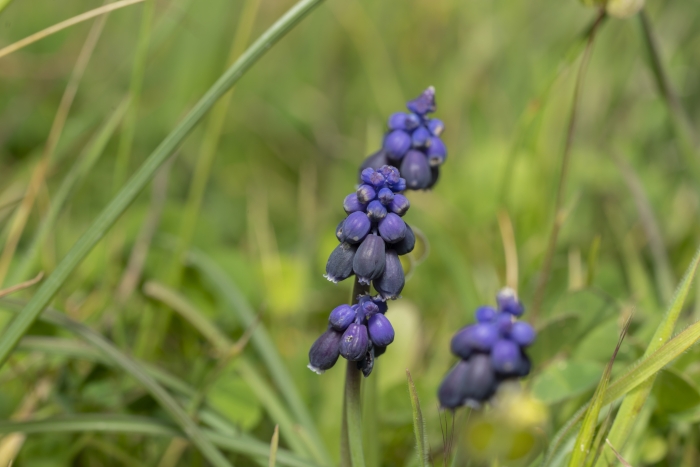Common Grape Hyacinth
(Muscari neglectum)
Common Grape Hyacinth (Muscari neglectum)
/
/

Eleftherios Katsillis
CC BY 4.0
Image By:
Eleftherios Katsillis
Recorded By:
Copyright:
CC BY 4.0
Copyright Notice:
Photo by: Eleftherios Katsillis | License Type: CC BY 4.0 | License URL: http://creativecommons.org/licenses/by/4.0/ | Rights Holder: Eleftherios Katsillis | Publisher: iNaturalist | Date Created: 2021-02-24T15:10:21-08:00 |
























Estimated Native Range
Summary
Muscari neglectum, commonly known as common grape hyacinth, is a perennial bulbous plant native to a variety of habitats including grasslands, open woodlands, and rocky slopes in Eurasia, from the Mediterranean region to the Caucasus. It typically grows to a height of 6-9 inches (15-23 cm) and produces dense, conical spikes of urn-shaped, deep blue to purple flowers in early to mid-spring, which are highly attractive to pollinators. The foliage is grass-like, and the plant is known for its ease of naturalizing in gardens.
Common grape hyacinth is valued for its vibrant blue flowers that resemble bunches of grapes, making it a popular choice for rock gardens, borders, underplanting beneath deciduous trees, and for naturalizing in lawns. It thrives in full sun to part shade and prefers well-drained soil, although it is tolerant of a wide range of soil types. Once established, it requires minimal maintenance and is relatively drought-tolerant. It can be propagated by dividing clumps after the foliage has died back. While generally disease-free, it can be susceptible to bulb rot if planted in overly wet conditions. In some regions, Muscari neglectum can spread vigorously and may become invasive, so it is important to monitor its growth and manage it responsibly.CC BY-SA 4.0
Common grape hyacinth is valued for its vibrant blue flowers that resemble bunches of grapes, making it a popular choice for rock gardens, borders, underplanting beneath deciduous trees, and for naturalizing in lawns. It thrives in full sun to part shade and prefers well-drained soil, although it is tolerant of a wide range of soil types. Once established, it requires minimal maintenance and is relatively drought-tolerant. It can be propagated by dividing clumps after the foliage has died back. While generally disease-free, it can be susceptible to bulb rot if planted in overly wet conditions. In some regions, Muscari neglectum can spread vigorously and may become invasive, so it is important to monitor its growth and manage it responsibly.CC BY-SA 4.0
Plant Description
- Plant Type: Herb, Bulb
- Height: 0.5-0.75 feet
- Width: 0.25-0.5 feet
- Growth Rate: Moderate
- Flower Color: Blue, Purple
- Flowering Season: Spring
- Leaf Retention: Deciduous
Growth Requirements
- Sun: Full Sun, Part Shade
- Water: Medium
- Drainage: Medium
Common Uses
Bee Garden, Border Plant, Groundcover, Low Maintenance, Potted Plant, Rock Garden, Street Planting
Natural Habitat
Grasslands, open woodlands, and rocky slopes in Eurasia
Other Names
Common Names: Common Grape Hyacinth, Musk-Hyacinth, Nutmeg-Hyacinth, Starch Grape Hyacinth, Starch-Hyacinth
Scientific Names: , Muscari neglectum, Botryanthus breviscapus, Botryanthus lelievrei var. strangwaysii, Botryanthus lelievrii var. strangwaysii, Botryanthus mandraliscae, Botryanthus mordoanus, Botryanthus neglectus, Botryanthus neglectus subsp. odorus, Botryanthus neglectus var. speciosa
GBIF Accepted Name: